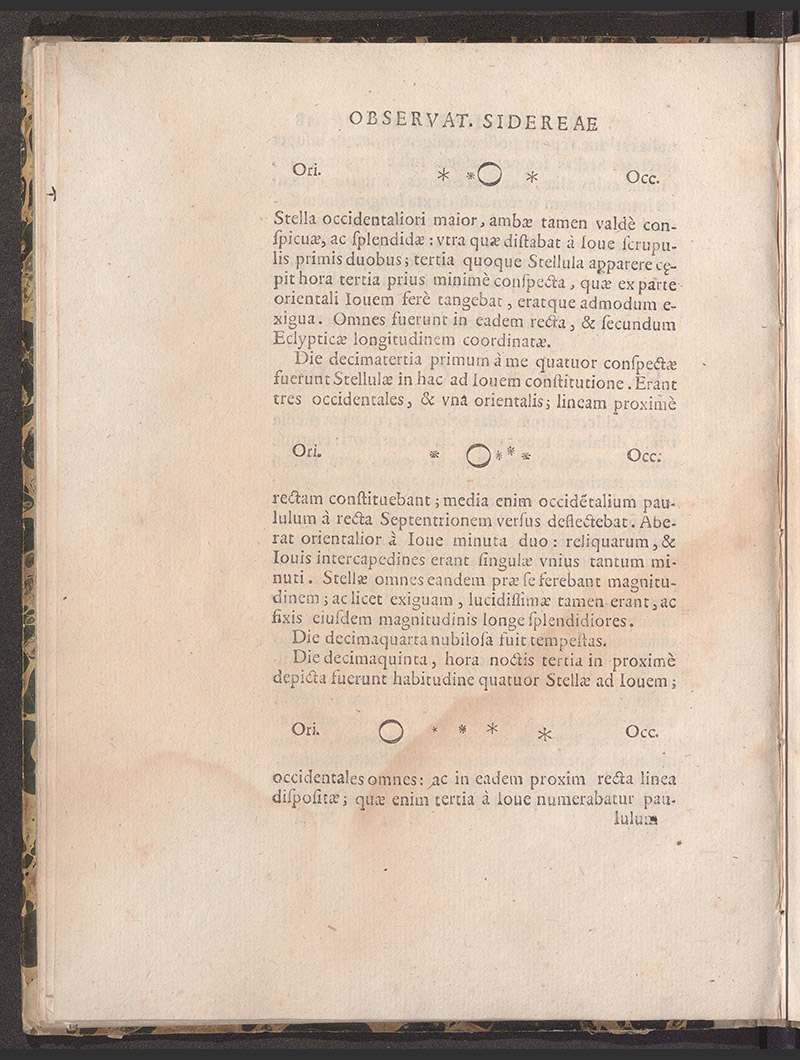The Moons of Jupiter

- Page with woodcuts illustrating the observations on January 12-13, 1610, pag. 18v.
- Galileo Galilei (1564-1642).
- Sidereus Nuncius Magna, longeque admirabilia spectacula pandens, suspiciendaque proponens unicuique, præsertim vero philosophis atque astronomis, quæ a Galileo Galileo Patritio Florentino Patavini gymnasii publico mathematico perspicilli nuper a se reperti beneficio sunt observata in Lunae facie, fixis, Lacteo Circulo, stellis nebulosis, apprime vero in quatuor planetis…Medicea Sidera nuncupandos decrevit.
- Venice: Thomas Baglionus, 1610.
Most of the Sidereus Nuncius is devoted to detailed records of the observations of four new “planets” orbiting around Jupiter from January 7 to March 2 1610. Apart from providing a lengthy, and daily, sequence of the different locations of these newly discovered celestial bodies, Galileo also explained the motions of this formation in the context of the fixed stars.
As an example of how Galileo represented his daily observations, let us focus on the woodcut on top of this page, a circle flanked by asterisks (the new “planets”) and Ori[ens] (east) and Occ[idens] (west). It represents the arrangements of the stars as seen through the telescope on January 12, starting at the first hour of the night. Galileo wrote: “The most eastern star was larger than the western one, but both were very conspicuous and bright. Both were two minutes distant from Jupiter. In the third hour a third little star, not at all seen earlier, also began to appear. This almost touched Jupiter on the eastern side and was very small. All were in the same straight line and aligned along the ecliptic.”
In short, Galileo showed that these four “planets”, or moons, go around Jupiter in orbits of different lengths: the smaller the orbit the shorter the duration of the period, ranging from one day to an entire month. In fact, this discovery was proudly announced in the title page: Quatuor planetis circa Iovis stellam disparibus intervallis, atque periodis, celeritate mirabili circumvolutis (four planets flying around the star of Jupiter at unequal intervals and periods with marvelous speed). More importantly, Galileo was also implicitly endorsing the Copernican system by challenging the idea that the Earth was the only center of heavenly motions, as Ptolemy argued. In other words, the Earth was not the only planet to have a moon: Jupiter had four!